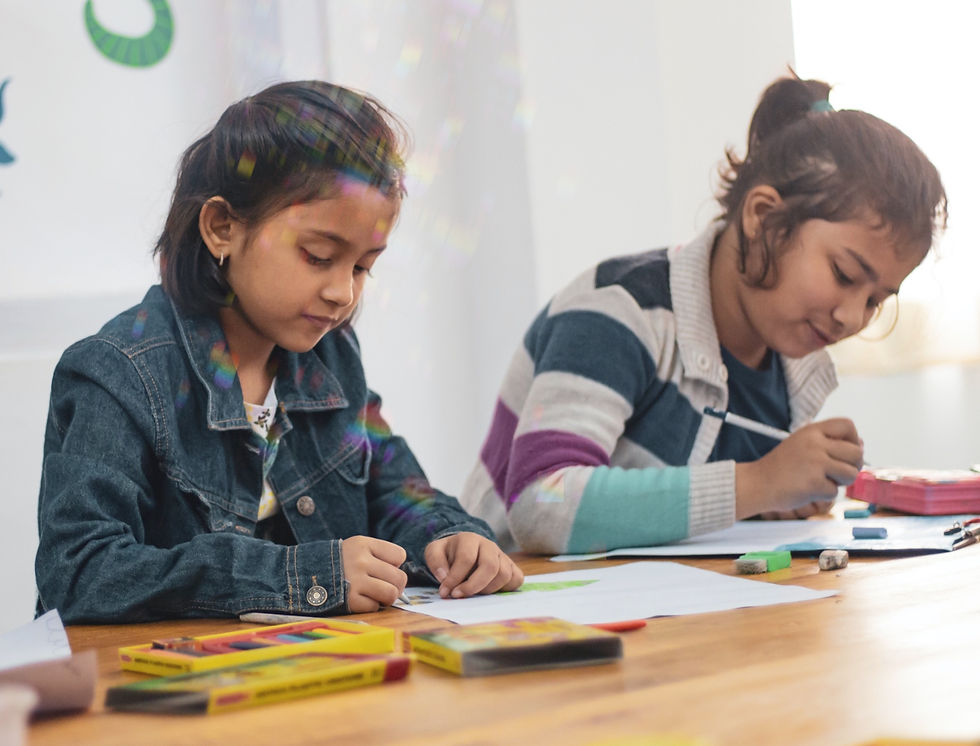(2) What are the Underlying Skills of Critical Thinking that Art Develops?
- Rose Cushwa

- Dec 11, 2020
- 3 min read

In her article “Critical Thinking Dispositions as an Outcome of Art Education” in 2006, Nancy Lampert, an art educator, shares the results of her study on critical thinking dispositions of college students which concludes that art education develops the underlying skills that help develop critical thinking. It also develops the ability to observe critically and change your perception to fit new information, and learning to trust yourself, also important skills in learning. A study by Cynthia Garcia and Carrie Isaacson in 2015 called “Comparing State Mandated Test Scores for Students in Programs with and without Fine Arts in the Curriculum” even showed correlation between taking art classes and higher scores on reading tests.
First, let’s look a little more at Lampert’s study. The study was done on college students to test the Critical Thinking Dispositions of students, their tendency to use and develop critical thinking skills, based on several different categories that make up the underlying skills of critical thinking. Art students showed higher scores in truth-seeking, critical thinking maturity, and open-mindedness. This specific combination indicates students that are more interested in finding the truth in research than protecting their preconceptions, and truth-seeking is believed to be the biggest indicator of Critical Thinking Dispositions being actively applied in Critical Thinking Skills. So how does art do this? According to Lampert, art education develops “independent inquiry, problem-solving, interactive discussion, and analysis” which are the exact skills that develop into critical thinking. If we look back to Critical Pedagogy we can see the overlap in these traits. We want students to problem solve, explore, talk, question, and most importantly think.
Art is inherently a problem-solving process, how do you make something from nothing (and art supplies)? So artists are developing those skills all the time. By deciding what to create they’re exploring ideas and interests and discussing and asking questions about them. When we look at artwork in the classroom and do critique’s, analysis is developing. Students are learning how to not take what they see at face value but really look and think about what they’re looking at. In looking at and discussing each other’s work students learn how to listen and understand from other’s perspectives developing open-mindedness.
A specific art skill to develop critical thinking is observational drawing and how it can develop a truth-seeking disposition. We’re all familiar with how foundational observational drawing is to other art skills, but to think about how it affects critical thinking we have to think back to how we first learned how to do it. I learned observational drawing my first semester of college in Drawing 1 to the relentless repetition of the phrase “Draw what you see!” From my professor. It seemed silly at first; obviously, that’s what I was trying to do. But if you learned how to do this when you were older like I did you might remember the “click” and once it makes sense it’s a game-changer. We have so many preconceptions in our heads about what things look like that until we’re practiced we try to draw what we think something is

supposed to look like, instead of what we’re actually seeing. Once we learn to really look at what we’re seeing and draw that, we can draw anything. When we engage in such careful observation, artists tend to do it everywhere, we analyze how we would draw a flower we walk past or a face in the coffee shop, and the more we observe and draw the more our memory and understanding of the visual world grows.
Researching or learning with critical thinking uses the same process, we have preconceived ideas and world views just like we do about the things we’re trying to draw. If we stick to those without learning to see we can’t learn and expand our knowledge and change the beliefs we had that are wrong. We need to look at things critically for what they really are and be willing to change accordingly. In learning observational drawing the truth-seeking habit of looking at everything for how it can be drawn can also help students start developing the habit to look at everything with the same open observation.




Comments